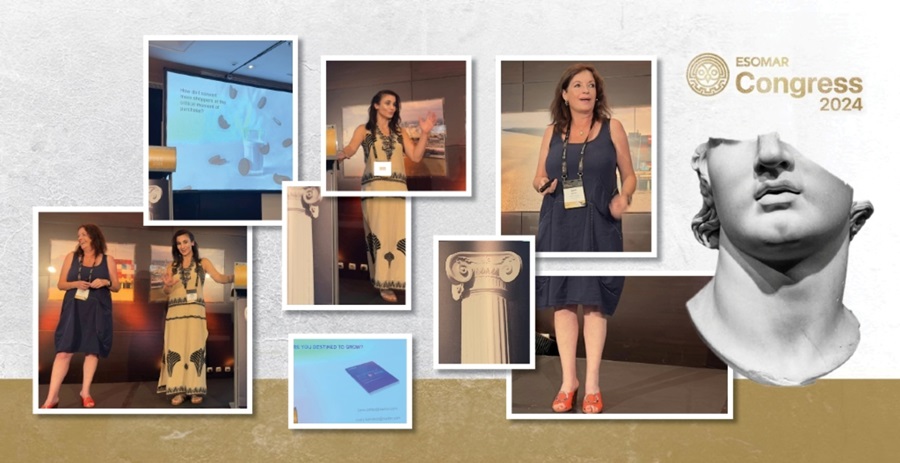People make 400 billion brand choices annually. As a result of these choices, some brands vanish, others just about survive and a selected few rise above any economic downturn…continuing to deliver strong returns for their shareholders. What’s their game?
We combined two large behavioral and attitudinal datasets, for insight into both people’s wallets and minds, and the answer revealed itself. In the process, we did some serious myth-busting of the rights and wrongs of brand marketing theories:
#1. No, point in time data cannot reveal secrets of growth.
Growth is an active change, so you need to be looking at change over time data to reveal how to achieve growth. If you take an over-simplistic look at what makes a big brand big at a point in time, you will get a different (likely misleading) answer.
#2. No, penetration is not the silver bullet for future growth.
If your brand’s large size is its sole attribute, it won’t necessarily keep on growing. However, if your brand’s equity today surpasses expectations for its size, it is 4x more likely to grow next year. #BeMeaningfullyDifferent.
#3. Yes, loyalty is a redundant notion, but preference is the real deal.
If there is no gap between your exposures (what you say about your brand) and your experiences (the ‘taste’ that you leave behind), you create a positive bias towards your brand, and so it’s more likely to be chosen #PredisposeMorePeople.
#4. No, availability alone is not enough to win at the moment of purchase.
It’s the harmonic orchestration of your distribution, product range, pack, pricing, even your promotions, that will give you the desired visibility to capture choices from other brands #BeMorePresent.
#5. No, a ‘breakthrough’ innovation move is not necessarily your golden ticket to growth.
Your size defines your next move; if you are a bigger brand, spot peripheral needs and set out to address them. But if you are a smaller brand, disrupt behaviors and steal from your prominent competitors #FindNewSpace.
Brand: just like any other business asset
While the battle for consumers ends in the aisles, it starts in people’s minds. Brand is one of a business’s most valuable assets and should be treated like any other. Our data reveals that a brand accounts for 32% of a company’s value, and in the case of the highest performing brands, its contribution is over 50%. How can you invest in the right places, so that your brand generates value?
IKEA, Heineken, Oreo and Baileys are four brands that rose to the challenge. So much so that their approaches solved long-standing growth mysteries:
#1. How do I align my brand’s interests with those of consumers?
People consistently perceive IKEA as being meaningfully different. So much so that, this last year, the brand achieved the highest Meaningfully Different and Salient scores in our BrandZ database. This alignment of interests is at the heart of their prolonged appeal; from flat-pack furniture that gives you a literal pat on the back every time you build it, and the labyrinth full of surprises that is their shopping experience, to their advertising - every single interaction oozes meaningful difference. Consider their recent ‘Life is not an IKEA catalogue’ campaign; is there a mother who hasn’t been sick, confined to a ‘washable’ sofa whilst their child was playing in another corner of the room?

#2. How can I encourage more category buyers to consider my brand?
For an established brand like Heineken, the challenge is to remain relevant and keep on growing after 150 years. For that, they needed to predispose more category buyers to consider their brand. How did they pull this off?
They dwelled on the insight that Heineken is not just in the beer business, it’s in the business of good times. And with this came the realization that Heineken is the world’s most misspelled beer brand. This specific insight didn’t just inspire their ad for their celebratory moment, rather turned into a concept that carried across beer trucks, bar signs, beer taps, social content…literally everywhere.
Even GenZ who cared (not!) about their celebratory moment, took note.
#3. How do I convert more shoppers at the critical moment of purchase?
2023 was an incredibly difficult year for brands looking to acquire more buyers. Still, Oreo persuaded nearly 25 million more households to buy its cookies. But how? By making themselves easy to find and easy to buy, by building more presence, by having strong and consistent brand assets to trigger predisposition, and by using variety and innovation to stand out at the moment of choice.
#4. How do I lift my category’s ceiling?
When Baileys transformed the Irish Cream from a simple drink to a versatile ingredient for cocktails, most of us gave it a try and nodded with pleasure. This was a perfect demonstration of how a brand can grow if they evolve with consumer trends. They gently pushed up their category’s ceiling, making the brand accessible to more people, and these innovative behaviors captured new spend.

You are done waiting…
…for the market to correct itself. The state of the economy is, admittedly, a strong growth force and, equally, a stubborn impediment. But then again, so are the weather and seasonality and all three are outside of our control. What remains well within a marketer’s influence is directing the brand’s true, sustainable, long-term growth through product, distribution, price, and advertising. And then the question that remains to answer is: do you know the right and wrong way to do things in marketing?
Jane Ostler and Mary Kyriakidi presented the myths and mysteries of brand marketing theories to delegates gathered at the ESOMAR Annual Congress in Athens September 2024. You can find the chronicle of our validated marketing truths in Kantar’s Blueprint for Brand Growth.


